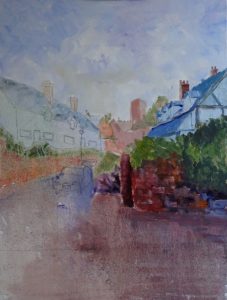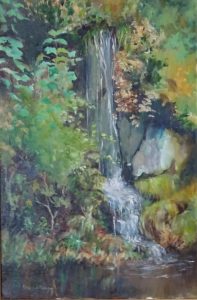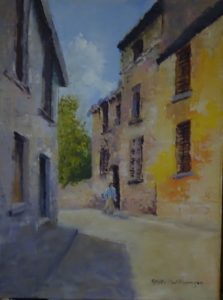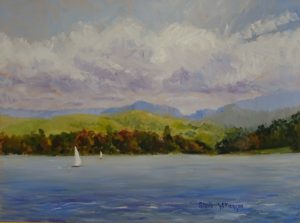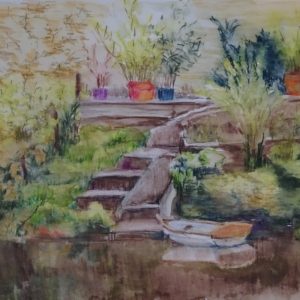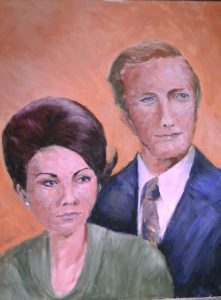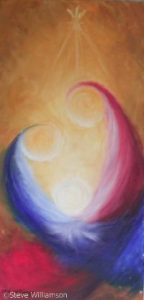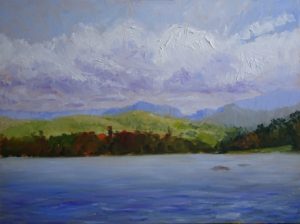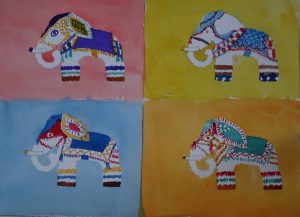How to get started can be a real pain. Painter’s block, even when you have a deadline – especially when you have a deadline, for that’s when it strikes most often for me – is a hazard of the occupation.
It’s easiest to deal with in oils or acrylics, in fact it very rarely occurs for me with these paints. All need to do is paint the entire canvas in a neutral colour. In my case that can mean Raw Sienna,though often means Orange, which isn’t very neutral, I grant you, but it doesn’t half get the painting juices going. It’s not hard to get going with the canvas already “ruined”. I am more likely to be blocked at a later stage, needing to progress the painting but unable to settle what I should do next. Then I fiddle about at the edges to work my way into the painting again.
The real difficulty is in painting watercolours. The white paper is an essential part of the process, so you can’t paint it out. Even a light pencil drawing does not always help. One way I came across in “Painting People in Watercolour” by Alex Powers was to flick paint onto the surface randomly. The white surface in broken – the paper is “ruined” – it can only get better. It certainly works if your style can accommodate the splashes, but even those flicks have to be done confidently. And that is the crux of the matter. Confidence, real or pretended, is the answer.
There is some help in working from light tones to dark, the classic technique in painting watercolours, so that your excursions tiptoe onto the paper. But the unfailing method I use, especially when painting without drawing some guide lines first, is to have everything ready, pull my concentration tightly onto the job in hand, have the finished piece in mind, convince myself that I can do it, and plunge in. It’s exhausting. Whoever claims that painting is a relaxation couldn’t be more wrong.

